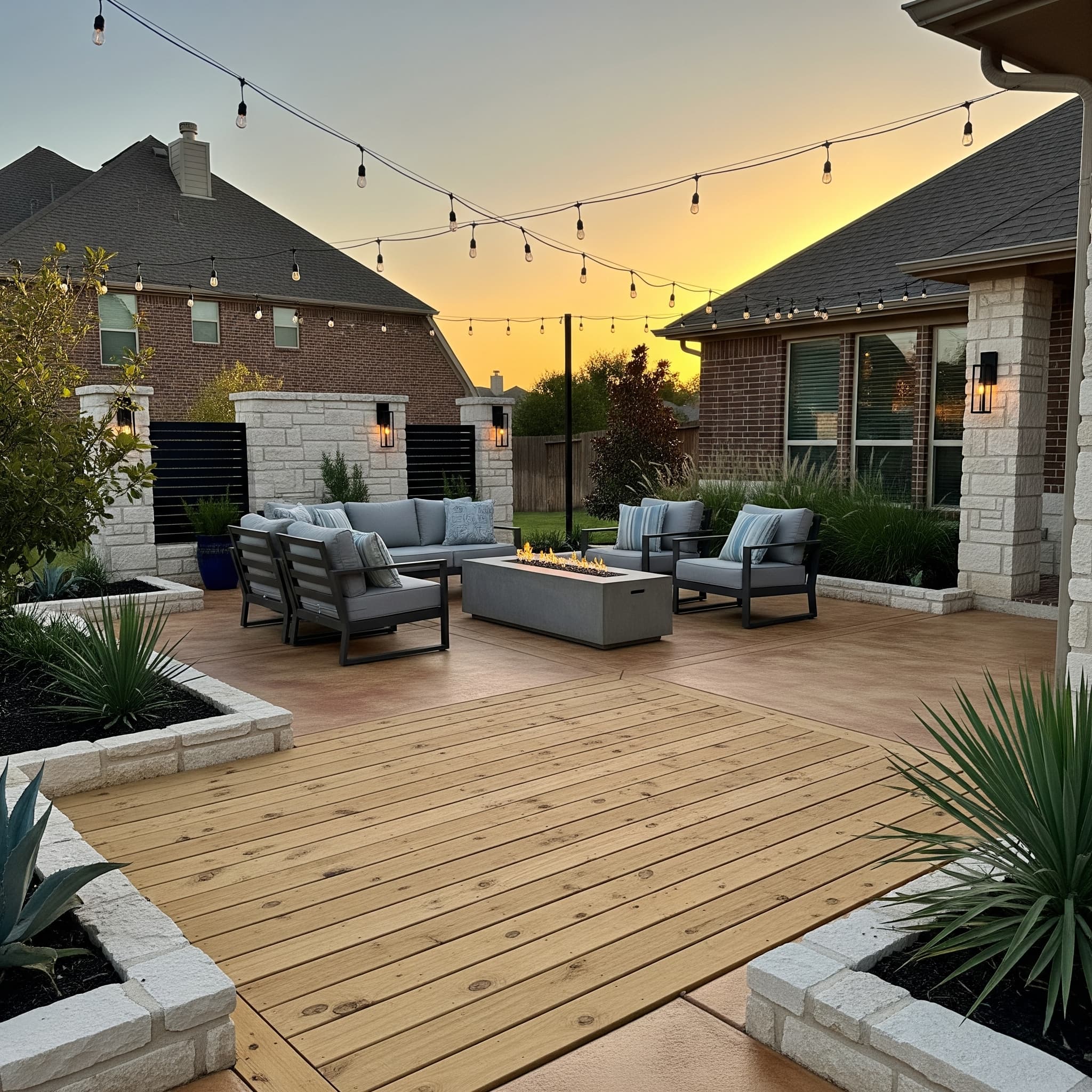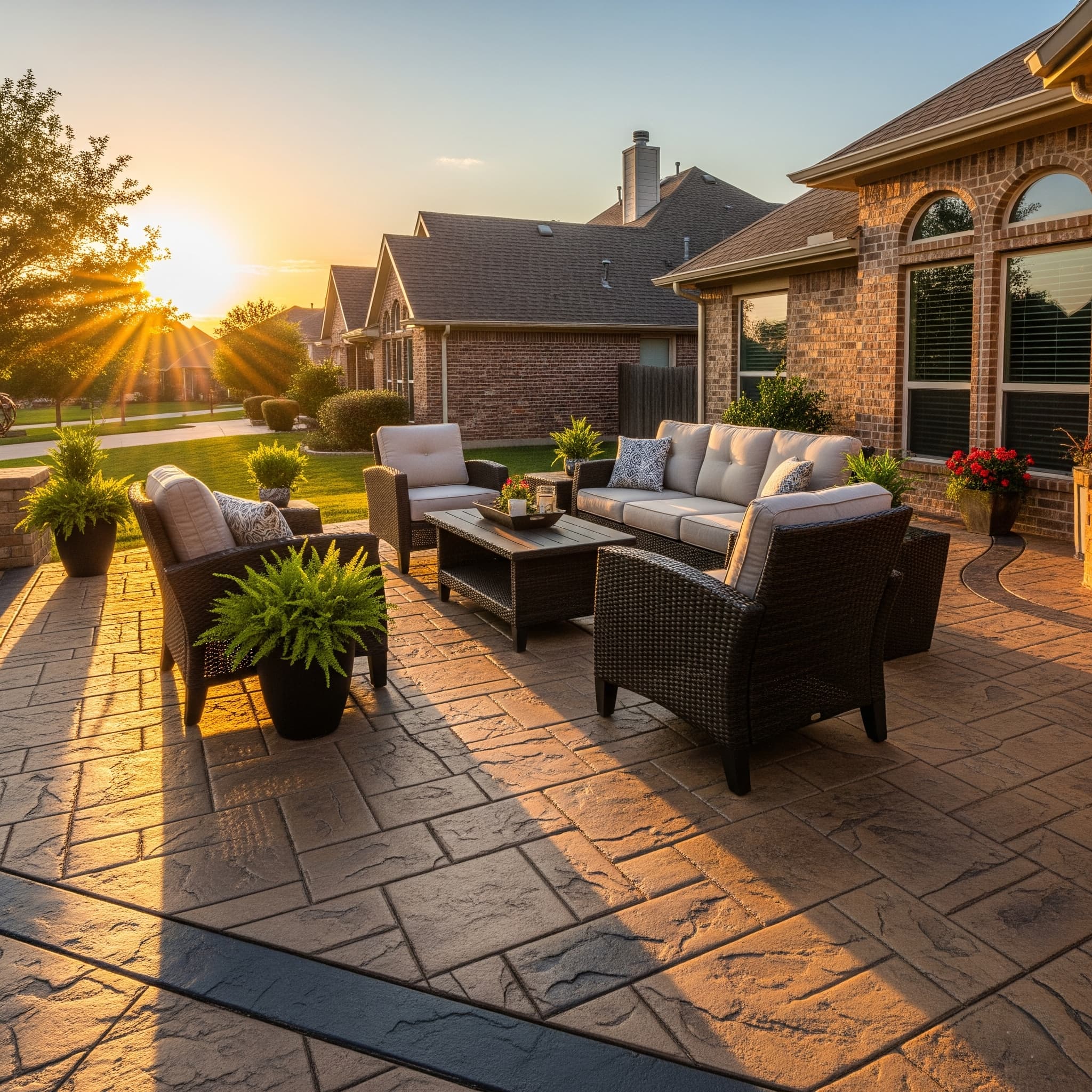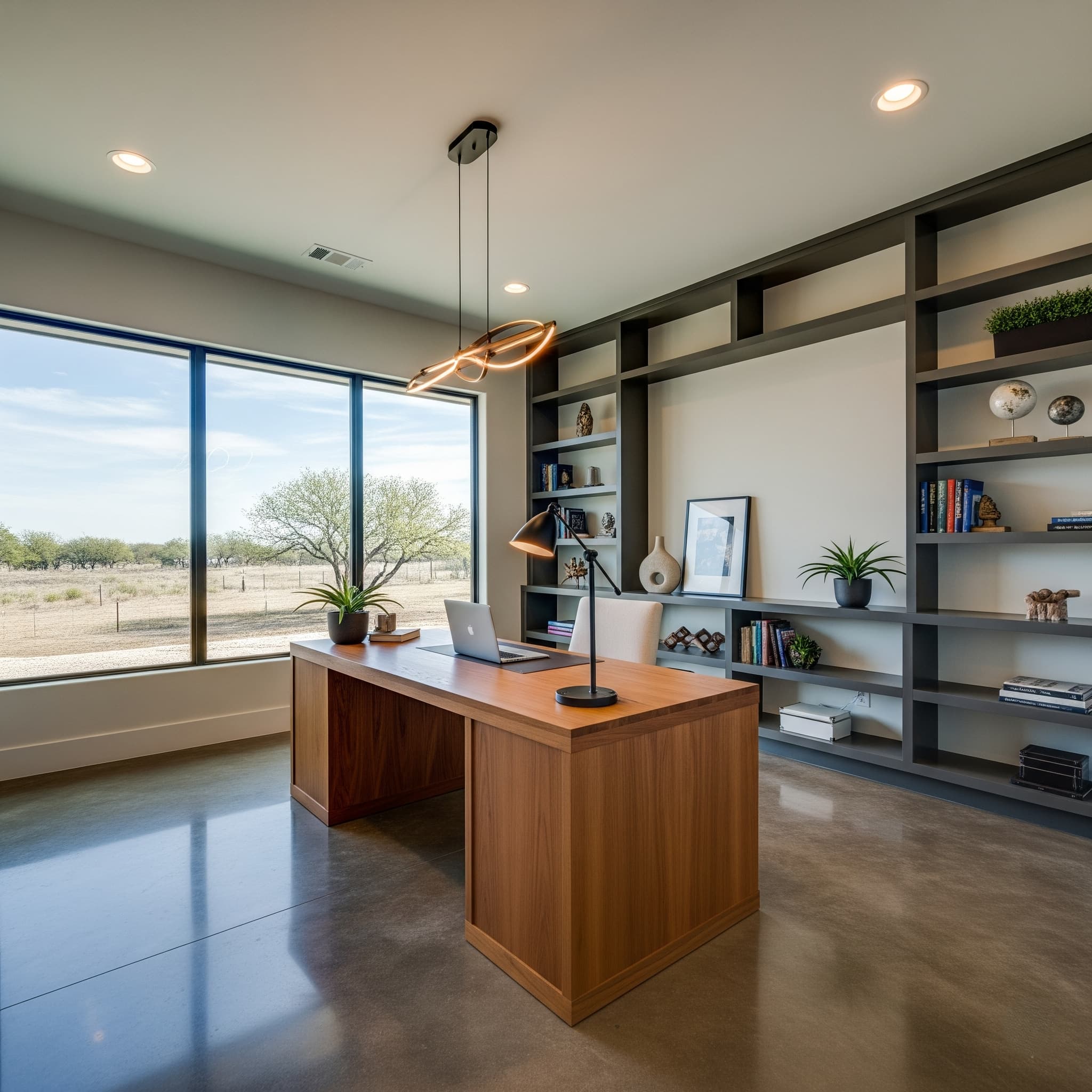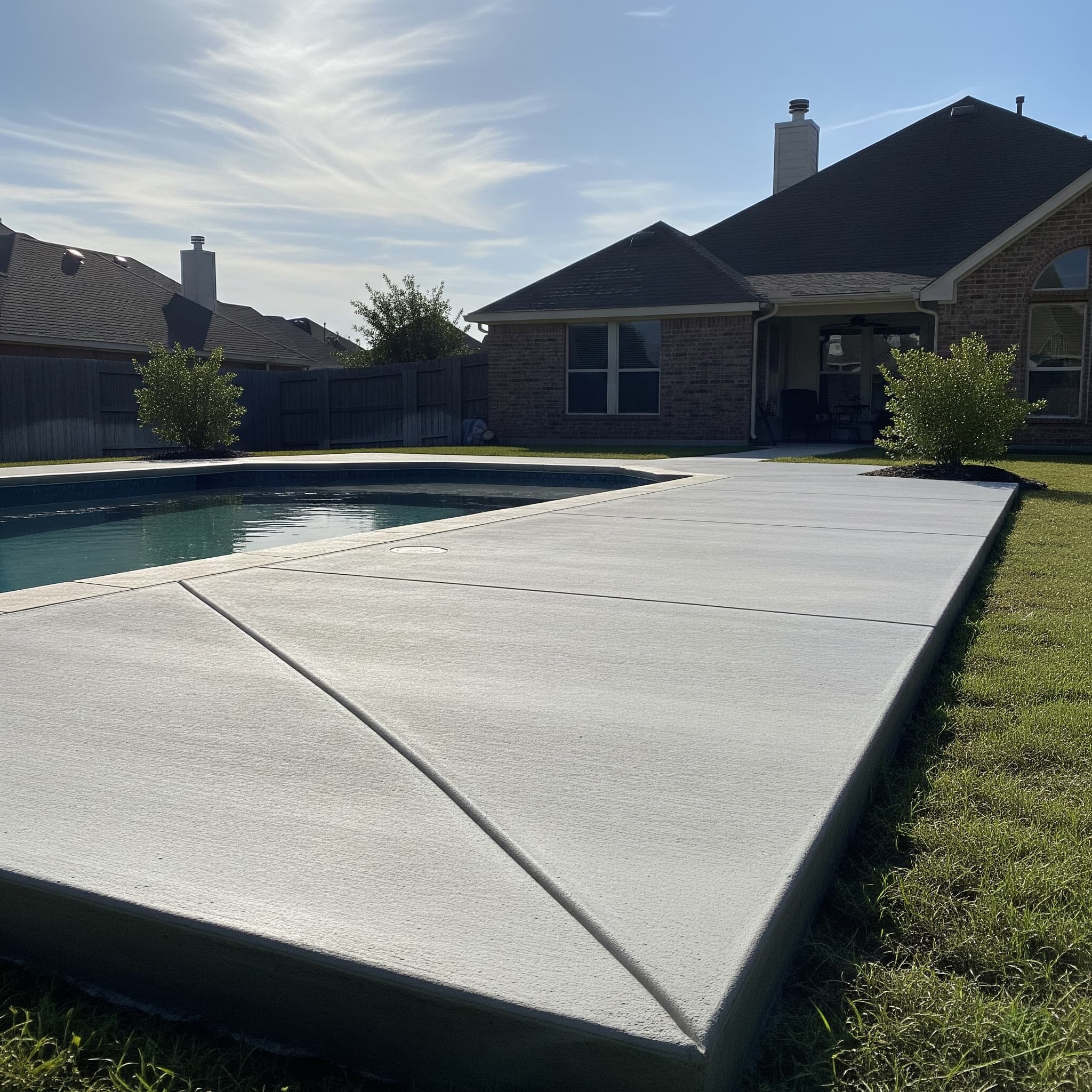
Building a Concrete Retaining Wall for Local Drainage
Concrete Retaining Wall
Constructing a concrete retaining wall for drainage purposes in Grand Prairie requires careful integration of structural engineering, local regulations, and environmental considerations. These specialized structures serve dual purposes: providing essential soil retention while managing stormwater runoff effectively. The unique challenges posed by Grand Prairie’s expansive clay soils and variable weather patterns demand expertly designed retaining wall systems that address both structural stability and drainage performance. At Grand Prairie Concrete Pros, we combine advanced engineering principles with local expertise to deliver retaining wall solutions that protect your property for decades. Our comprehensive approach ensures every project meets strict municipal requirements while providing superior drainage management.
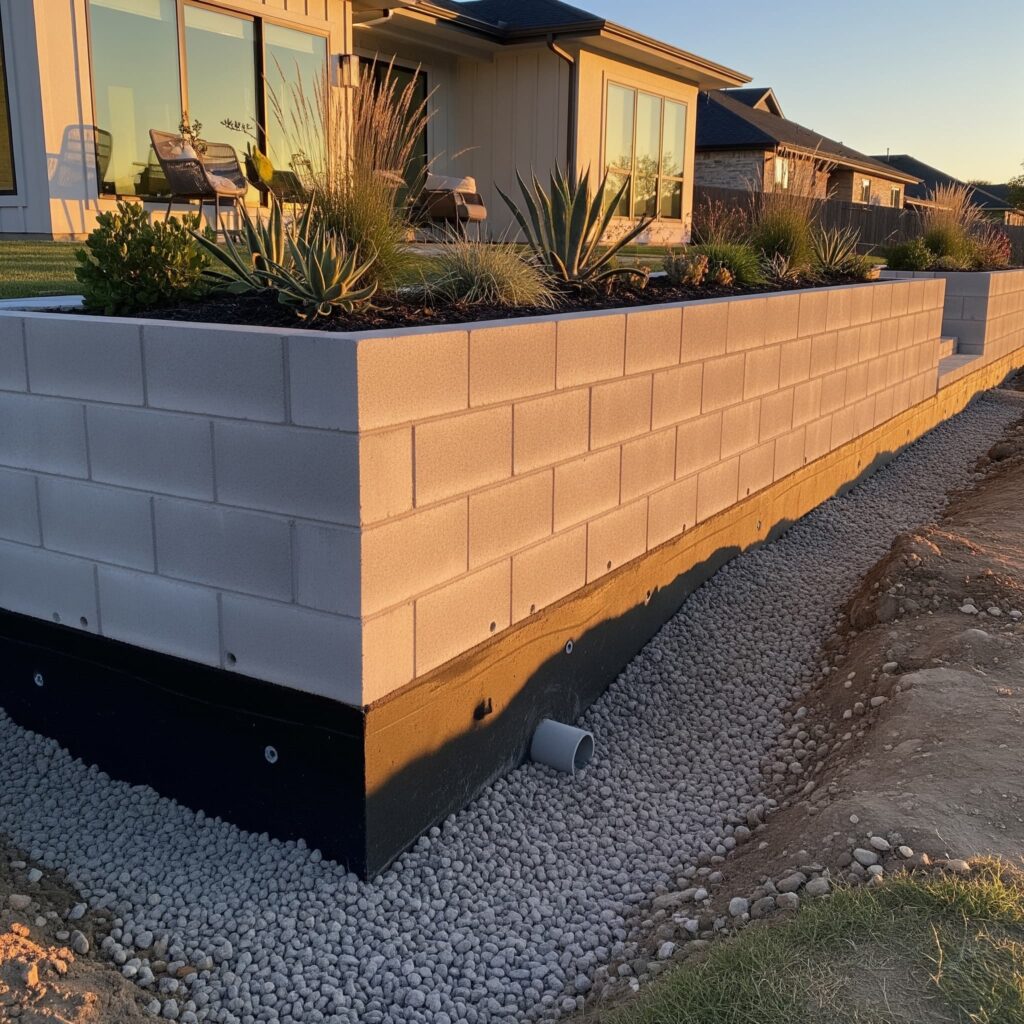
Understanding Drainage-Focused Retaining Wall Design
Concrete retaining walls designed specifically for drainage applications must address both structural loads and water management challenges simultaneously. These structures intercept surface runoff, channel groundwater, and prevent soil erosion while maintaining structural integrity under varying moisture conditions. The design process requires careful analysis of soil conditions, water flow patterns, and long-term performance expectations. Unlike decorative or purely structural retaining walls, drainage-focused systems incorporate specialized features such as weep holes, French drains, waterproof membranes, and proper backfill materials. These components work together to prevent hydrostatic pressure buildup that could compromise wall stability or create flooding issues.
Structural Requirements
Grand Prairie requires engineered plans for all retaining walls exceeding four feet in height, sealed by a licensed professional engineer. The design must account for lateral earth pressure, surcharge loads, and hydrostatic forces that develop during heavy rainfall events. Additionally, walls must demonstrate adequate factors of safety against sliding, overturning, and bearing capacity failure. Foundation design becomes critical in Grand Prairie’s expansive clay soils, often requiring deeper footings and specialized reinforcement to accommodate seasonal soil movement. The integration of drainage elements must not compromise structural performance while ensuring long-term stability.
Grand Prairie Regulatory Requirements
Municipal regulations in Grand Prairie establish specific requirements for retaining wall construction, particularly when these structures impact local drainage patterns. According to the City’s Drainage Design Manual, retaining walls are not allowed in drainage easements, stormwater management areas, floodplains, floodways, or right-of-ways, and must be located on private property, including footings. Building permits are mandatory for all retaining wall construction, regardless of height. Walls exceeding four feet require plans sealed by a registered professional engineer licensed in Texas, though city staff may require engineering documents for walls less than four feet in height. This requirement ensures proper integration with local drainage systems and compliance with safety standards.
Drainage Design Compliance
Projects must demonstrate compliance with Grand Prairie’s comprehensive drainage policies, which prioritize flood mitigation and stormwater management. The city’s MS4 stormwater management program requires consideration of water quality impacts and downstream effects of any drainage modifications. Environmental reviews may be necessary for larger projects, particularly those affecting natural drainage channels or wetland areas. Coordination with the Engineering Department ensures proper integration with existing municipal drainage infrastructure.
Site Assessment and Soil Conditions
Successful retaining wall projects begin with a thorough site assessment addressing both geotechnical and hydrological conditions. Grand Prairie’s location within the Blackland Prairie region presents unique challenges due to expansive clay soils with high shrink-swell potential. These conditions significantly impact both structural design and drainage system performance. Geotechnical investigation determines soil bearing capacity, expansion characteristics, and seasonal moisture variation patterns. This data guides foundation design, backfill specifications, and drainage system layout. Understanding groundwater flow patterns helps optimize drainage placement and prevent unexpected water accumulation.
Drainage Pattern Analysis
Comprehensive site analysis identifies existing drainage patterns, upstream contribution areas, and downstream discharge points. This assessment ensures the retaining wall system integrates seamlessly with natural and constructed drainage features without creating adverse impacts on neighboring properties. Near Lone Star Park and State Highway 360 corridors, projects must consider increased runoff from developed areas and ensure adequate capacity for peak flow events. Proper analysis prevents system overload during intense rainfall periods common in North Texas.
Construction Methods and Materials
Modern concrete retaining wall construction utilizes advanced materials and techniques specifically adapted for drainage applications. High-strength concrete with appropriate admixtures resists freeze-thaw cycles and chemical exposure from groundwater. Reinforcement design accounts for both structural loads and thermal stresses that develop in Texas climate conditions. Waterproofing systems protect the wall structure while allowing controlled water passage through designed drainage features. These systems typically include membrane waterproofing, drainage composites, and protection layers that maintain performance over decades of service.
Drainage Integration Features
Weep holes placed at regular intervals allow hydrostatic pressure relief while preventing soil migration through the openings. French drain systems behind the wall collect and redirect groundwater, reducing loading on the structure. Proper filter fabric installation prevents fine soil particles from clogging drainage systems over time. Backfill selection becomes critical, typically utilizing free-draining granular materials that maintain stability while allowing water movement. Compaction procedures ensure adequate support without creating impermeable zones that could trap water.
Specialized Drainage Applications
Retaining walls serve various drainage functions beyond basic soil retention, including channel lining, slope stabilization, and stormwater management facility construction. Each application requires specialized design considerations and construction techniques tailored to specific performance requirements. Channel retaining walls protect against erosion while maintaining hydraulic efficiency for storm flows. These structures must withstand high-velocity flows and debris impact while providing long-term protection for adjacent properties. Design integration with upstream and downstream facilities ensures smooth flow transitions.
Stormwater Management Integration
Modern retaining wall systems often incorporate stormwater management features such as infiltration zones, bioretention areas, and water quality treatment systems. These green infrastructure elements provide environmental benefits while maintaining primary structural and drainage functions. Such integrated approaches align with Grand Prairie’s commitment to sustainable stormwater management practices and can provide cost savings compared to separate structural and environmental systems.
Long-term Performance and Maintenance
Well-designed concrete retaining walls require minimal maintenance when properly constructed and installed. However, drainage components need periodic inspection and maintenance to ensure continued performance. Regular cleaning of weep holes prevents blockage that could lead to hydrostatic pressure buildup. Annual inspections assess structural condition, drainage function, and any signs of settlement or movement. Early identification of maintenance needs prevents minor issues from developing into major problems requiring expensive repairs or reconstruction.
Performance Monitoring
Monitoring systems can provide early warning of performance changes, particularly important for large or critical installations. Simple observation protocols track water management effectiveness and structural stability over seasonal cycles. Documentation of performance history assists in maintenance planning and provides valuable data for future projects with similar conditions and requirements.
Professional Design and Construction Benefits
Professional retaining wall design and construction ensure optimal integration of structural requirements, drainage performance, and regulatory compliance. Our team possesses a deep understanding of local soil conditions, climate factors, and municipal requirements that affect project success. Quality control throughout construction prevents costly problems and ensures long-term performance. Professional installation includes proper foundation preparation, reinforcement placement, drainage system integration, and comprehensive testing to verify design compliance. Trust Grand Prairie Concrete Pros to deliver expertly engineered retaining wall solutions that provide superior drainage management while meeting all local requirements. Our comprehensive approach ensures your investment provides lasting protection and environmental stewardship. Contact us today to discuss your specific drainage challenges and discover how professional retaining wall construction can solve your property’s water management needs.
